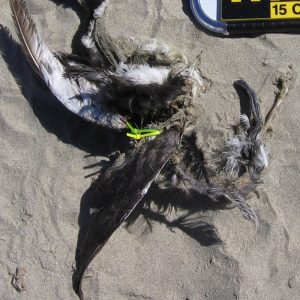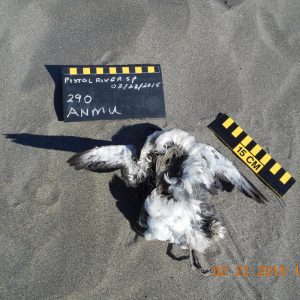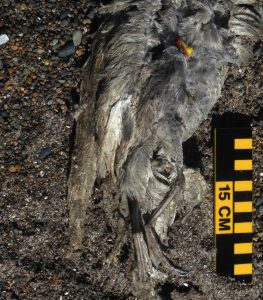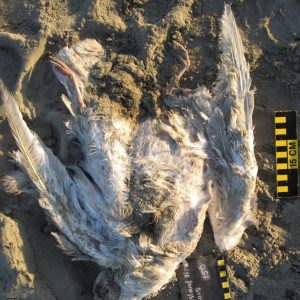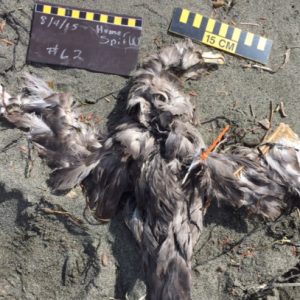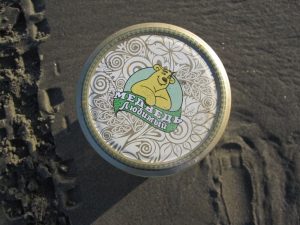Hi COASSTers,

Summer signals COASST’s busy season, especially along the West Coast – exhausted breeders (and their chicks) arrive on COASST beaches beginning in July. Alan, who surveys Bob Creek and Stonefield Beach sounded the alarm about dozens of Common Murre chicks on Oregon South beaches. Staff at three partner organizations, Alaska Maritime National Wildlife Refuge (Leslie Slater), the International Pacific Halibut Commission (Tracy Geerneart), and Washington Sea Grant (Ed Melvin) alerted COASST to two wrecks in Alaska – murres near Homer, shearwaters, fulmars, and murres near St. George Island.
With the wreck season upon us, here are some helpful tips to expedite processing lots of birds:
- after the 10th bird, don’t measure – record, tag, and photograph only
- process birds as a group – record, tag, and photograph together: we sometimes bring a 5-gallon bucket along to assist with this
- bring extra helping hands and delegate people to specific tasks: one person tags and measures, one person takes notes, one person takes photos and writes on slate
Watch out for those Alcid chicks! Below, we’ve profiled two sets of four birds – in each of the sets, one species is not the same as the others!
Let’s take a look:
Wing measurements (L to R): 13 cm, 20 cm, 12 cm, 11 cm
Credits (L to R): Grant and Kathy (Oregon Mile 102), Marc and Craig (Oregon Mile 313 S), Teresa and Danny (Pistol River, OR), Joann and Julie (Klipsan Beach, WA)
It’s photo THREE that’s different here (Ancient Murrelet). The rest are adult Common Murres. Here’s why:
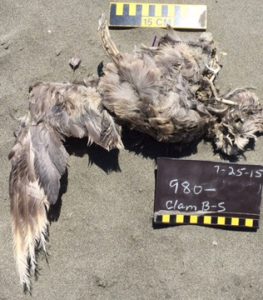
Feet are pale, not dark, and the secondaries do not have white tips. In photos one and four, all murres are in molt. Wings look “stumpy” like those of a juvenile, except the face of all these birds is mostly dark. Check out the feather wear of the bird in photo one. Even though the chin is dark, we know this can’t be a juvenile – juveniles have fresh, dark plumage all over – this bird has worn plumage except for the head and new (growing) primaries.
Wing measurements (L to R): 29 cm, 28 cm, 42 cm, N/A
Credits (L to R): Terry (Clam Beach South, CA), Steven and Nancy (Coronado Shores, OR) Ken (Sarichef East, AK), Deborah (Homer Spit Middle, AK).
It’s photo THREE that’s different. The rest are Northern Fulmars. Here’s why:
Although the plumage is similar, the wing measurement is WAY too big for a fulmar (28-33cm). Compare the heel (joint at base of toes) of the bird in photo two with photo three – that’s the swollen heel of a Larid, a Large Immature Gull.
The mystery item from our last edition has been identified thanks to Ken and Art. As Art points out, “it is undoubtedly a butane powered micro brazing torch. Those things make great holiday gifts for the hard-to-buy-for crack or meth smoker, but they are also handy for electricians or mechanics with a need to heat something relatively small or delicate.”
This week Ken from Shishmaref encountered a noteworthy concentration of objects with Russian and Korean writing. We are still in the process of translating the Korean, but in the meantime thought we’d share with you some of his finds.
Russian translation student Sarah identified that the jar is from brand Медведь любимый, translated as “favorite bear,” a company that cans fruits and vegetables.
The tube shown here contained hand lotion from brand Белоручка, which translates to “small white hands” or kid-glove.
Check out the tubeworms that Keith found on his July survey in Ocean Shores (WA). Tubeworms anchor themselves to available substrates and secrete calcium carbonate, which forms the tubes that surround them. These tubes offer some protection from potential predators and other dangers. While there is still a lot to be researched about these unique animals, according to National Geographic, tubeworms have been around for at least 3 million years and can tell us a lot about the ocean’s history.
Seen something on the beach you’ve always wondered about? Send us a photo!
Cheers,
Erika, Julia, Jane, Hillary, Charlie, Heidi, Jenn, and the COASST Interns

